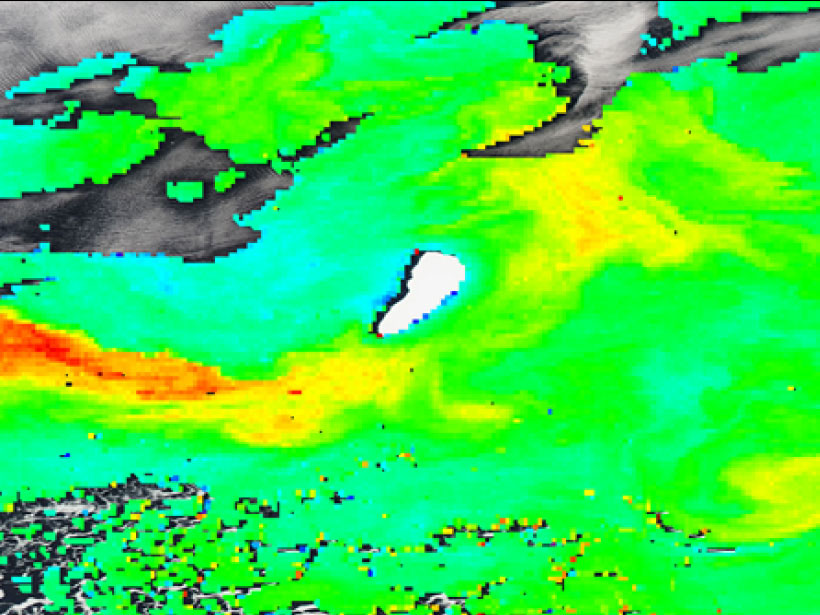Massive icebergs calving off of Antarctic ice sheets and floating through the Southern Ocean deposit iron, which fertilizes the seawater and nurtures massive phytoplankton blooms. This natural carbon sequestration system sucks up 0.2 gigaton of carbon every year, scientists reported this week in a new study in Nature Geoscience.
The team tracked 10 years of data from 17 icebergs, 18–50 kilometers long, as the huge blocks bobbed around the Southern Ocean. Using satellite imagery, the researchers looked at the color of the water as the icebergs passed through. They noted that in the wake of iron-rich debris deposited by the icebergs, blooms of phytoplankton emerged, sometimes up to 1000 kilometers from the iceberg itself.
Bloom and Die
Iceberg-related blooms could contribute a fifth of the Southern Ocean’s total carbon sequestration.
The satellite image above depicts an iceberg 50 kilometers in length—which is almost the width of Rhode Island—with varying concentrations of chlorophyll spreading fore and aft from the floating block. Warmer colors represent higher concentrations. The chlorophyll indicates the presence of blooms of phytoplankton nurtured by the iron. These tiny organisms absorb carbon compounds into their bodies as they grow. When they die, they fall to the bottom of the ocean, taking all that carbon with them.
Scientists had previously recognized this effect but had tracked only small icebergs shorter than 1 kilometer, said Grant Bigg, a professor in Earth systems science at the University of Sheffield in the United Kingdom. He and his colleagues turned to satellite data to observe the phenomenon on a much broader scope and found that iceberg-related blooms could contribute a fifth of the Southern Ocean’s total carbon sequestration.
Although this carbon capture is dwarfed by the world’s emissions of 10 gigatons of carbon annually, Bigg suggests that as warming leads to more icebergs breaking off from glaciers, carbon traps triggered by melting glaciers could become more important.
—JoAnna Wendel, Staff Writer
Citation: Wendel, J. (2016), Icebergs fertilize Southern Ocean, sequester carbon, Eos, 97, doi:10.1029/2016EO043707. Published on 15 January 2016.
Text © 2016. The authors. CC BY-NC 3.0
Except where otherwise noted, images are subject to copyright. Any reuse without express permission from the copyright owner is prohibited.

